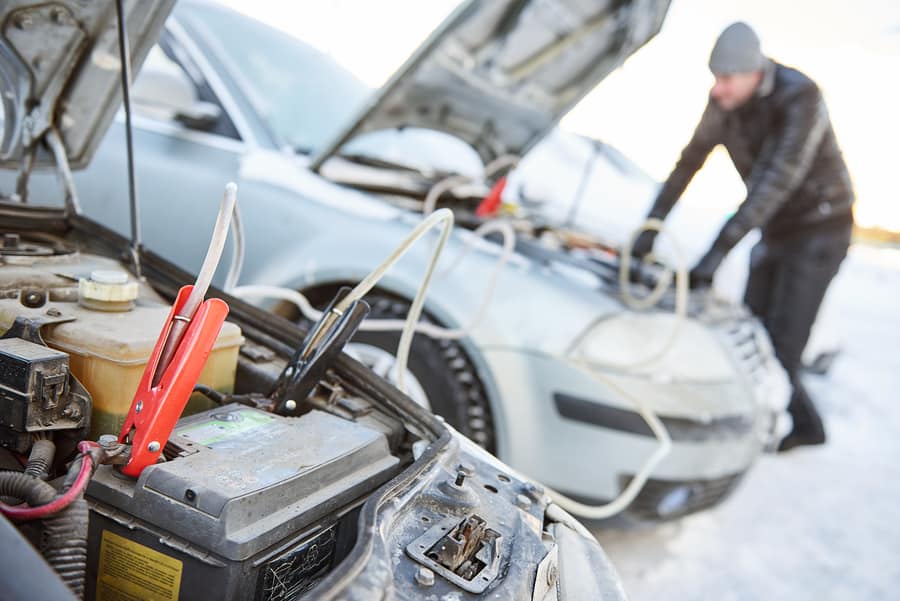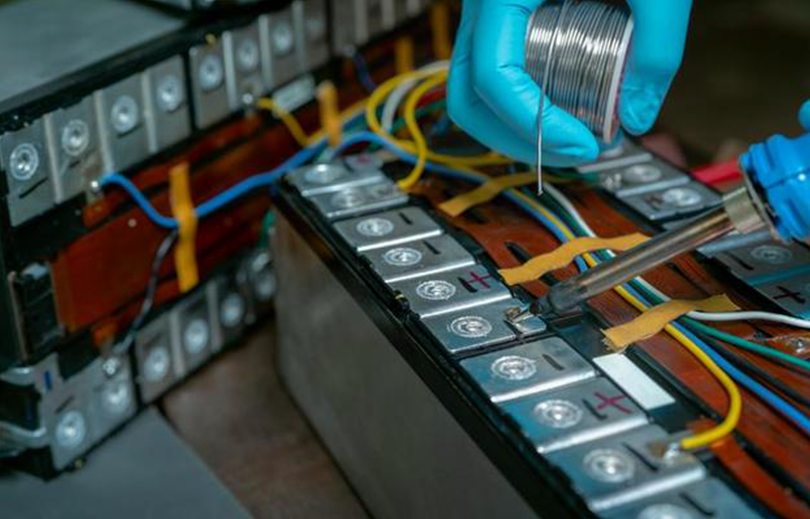Lithium-ion Battery: The Core Technology of Modern Energy Storage
Lithium-ion battery, as one of the core technologies in the field of modern energy storage, has been attracting attention since its birth with its excellent performance and wide application prospects. This article will deeply explore the basic principles, structural composition and unique advantages of lithium-ion batteries in energy storage, and reveal the secrets of this technological product to you.
1. Basic Principles
Li-ion battery is a secondary battery, that is, a rechargeable battery, and its working principle mainly depends on the movement of lithium ions between the positive electrode and the negative electrode. During the charging process, lithium ions are deintercalated from the positive electrode material and embedded into the negative electrode material through the electrolyte, making the negative electrode in a lithium-rich state; while during the discharging process, lithium ions are deintercalated from the negative electrode material and returned to the positive electrode through the electrolyte to complete a complete charging and discharging cycle. This process is commonly referred to as the “rocking chair battery” effect.

2. Structural Composition
The structure of Li-ion battery is relatively complex, but it mainly consists of the following main parts:
Positive electrode: The positive electrode is an important component of lithium-ion batteries, and usually uses lithium-containing oxides as active materials, such as lithium cobalt oxide (LixCoO2). The choice of positive electrode material directly affects the performance of the battery, including energy density, cycle life, etc.
Negative electrode: The negative electrode usually uses carbon materials such as graphite or petroleum coke as active materials. These materials have good lithium insertion properties and can receive lithium ions that migrate from the positive electrode during charging.
Electrolyte: The electrolyte is the channel for lithium ion migration in Li-ion batteries, usually a solution of organic solvents and lithium salts. The performance of the electrolyte directly affects the ionic conductivity and safety of the battery.
Diaphragm: The diaphragm is located between the positive and negative electrodes to prevent short circuits caused by direct contact between the two electrodes. The diaphragm also allows lithium ions to pass through to complete the charge and discharge process.
Battery case: The battery case is used to encapsulate all of the components inside the battery and protect the battery from the external environment. Common battery case materials include steel cases and aluminum cases.

3. Unique Advantages
The reason why lithium-ion batteries can occupy an important position in the field of energy storage is mainly due to the following unique advantages:
High energy density: Lithium-ion batteries have high energy density and can store a large amount of electrical energy in a small volume, which is particularly important for applications such as portable electronic devices and electric vehicles.
Long cycle life: Lithium-ion batteries have a long cycle life and can maintain a high level of performance after multiple charge and discharge cycles, reducing the cost of ownership.
No memory effect: Compared to early nickel-cadmium batteries and nickel-metal hydride batteries, lithium-ion batteries have the characteristics of no memory effect, that is, the battery capacity does not decrease due to partial discharge.
Low self-discharge rate: Lithium-ion batteries have a low self-discharge rate and can maintain a high power level when not used for a long time.
Environmentally friendly: Lithium-ion batteries do not contain harmful substances such as heavy metals and have a low impact on the environment. At the same time, with the advancement of recycling technology, the recycling rate of lithium-ion batteries is also increasing.
In summary, lithium-ion batteries have become one of the core technologies in the field of modern energy storage with excellent performance and wide application prospects. Through continuous technological innovation and process improvement, the performance of lithium-ion batteries will be further enhanced, providing more convenient and efficient energy solutions for people’s daily lives and industrial production.
-
 In today's world, staying connected is essential. Whether you're out on the road or camping in the great outdoors, having a reliable power source is crucial to keep your devices charged and ready to go. This is where the 24V on-board battery charger comes in, providing an efficient and convenient way to power up your devices anywhere. Designed for...Կարդալ ավելին
In today's world, staying connected is essential. Whether you're out on the road or camping in the great outdoors, having a reliable power source is crucial to keep your devices charged and ready to go. This is where the 24V on-board battery charger comes in, providing an efficient and convenient way to power up your devices anywhere. Designed for...Կարդալ ավելին -
 Lithium-ion batteries have become a popular choice for various applications, including electric vehicles, renewable energy storage, and portable electronics. Among the various types of lithium-ion batteries, the lithium iron phosphate (LiFePO4) battery stands out for its superior safety, performance, and durability. One such example is the high-capacity 12V 100Ah lithium battery with LiFePO4 technology. This battery is designed to...Կարդալ ավելին
Lithium-ion batteries have become a popular choice for various applications, including electric vehicles, renewable energy storage, and portable electronics. Among the various types of lithium-ion batteries, the lithium iron phosphate (LiFePO4) battery stands out for its superior safety, performance, and durability. One such example is the high-capacity 12V 100Ah lithium battery with LiFePO4 technology. This battery is designed to...Կարդալ ավելին -
 Սատկած մարտկոցով ճանապարհին խրվելը փորձ է, որի հետ ոչ ոք չի ցանկանում զբաղվել: Բայց շարժական jump starter մարտկոցների հայտնվելով, այդ վախը կարող է անցյալի բան լինել: Այս կոմպակտ և թեթև սարքերը կարող են ձեր մեքենային տալ այն խթանը, որն անհրաժեշտ է ճանապարհին վերադառնալու համար՝ առանց հույսը դնելու…Կարդալ ավելին
Սատկած մարտկոցով ճանապարհին խրվելը փորձ է, որի հետ ոչ ոք չի ցանկանում զբաղվել: Բայց շարժական jump starter մարտկոցների հայտնվելով, այդ վախը կարող է անցյալի բան լինել: Այս կոմպակտ և թեթև սարքերը կարող են ձեր մեքենային տալ այն խթանը, որն անհրաժեշտ է ճանապարհին վերադառնալու համար՝ առանց հույսը դնելու…Կարդալ ավելին -
 When it comes to enjoying a day out on the water, having a reliable boat is crucial. One key component that ensures a smooth start-up is the cranking battery. This essential part provides the necessary power to start the boat's engine and get you sailing in no time. In this article, we will explore the importance of a cranking battery...Կարդալ ավելին
When it comes to enjoying a day out on the water, having a reliable boat is crucial. One key component that ensures a smooth start-up is the cranking battery. This essential part provides the necessary power to start the boat's engine and get you sailing in no time. In this article, we will explore the importance of a cranking battery...Կարդալ ավելին -
 The LiFePO4 battery, or lithium iron phosphate battery, is a type of rechargeable battery that has gained popularity in recent years due to its high energy density, long cycle life, and improved safety compared to other lithium-ion batteries. One of the key factors that make LiFePO4 batteries attractive to consumers is their durability and longevity. In this article, we will...Կարդալ ավելին
The LiFePO4 battery, or lithium iron phosphate battery, is a type of rechargeable battery that has gained popularity in recent years due to its high energy density, long cycle life, and improved safety compared to other lithium-ion batteries. One of the key factors that make LiFePO4 batteries attractive to consumers is their durability and longevity. In this article, we will...Կարդալ ավելին -
 Unleashing Power: Exploring the Advantages and Applications of the High Capacity 12V LiFePO4 BatteryIntroduction: The demand for high-capacity batteries has grown significantly in recent years due to the increasing need for energy storage in various applications. One such battery that has gained popularity is the High Capacity 12V LiFePO4 Battery with a capacity of 100Ah. This article will explore the features, benefits, and applications of this advanced battery technology. Features: The High...Կարդալ ավելին
Unleashing Power: Exploring the Advantages and Applications of the High Capacity 12V LiFePO4 BatteryIntroduction: The demand for high-capacity batteries has grown significantly in recent years due to the increasing need for energy storage in various applications. One such battery that has gained popularity is the High Capacity 12V LiFePO4 Battery with a capacity of 100Ah. This article will explore the features, benefits, and applications of this advanced battery technology. Features: The High...Կարդալ ավելին -
 Lithium Iron Phosphate (LiFePO4) batteries have gained popularity in the past few years. The reasons for their popularity are their unique features and applications. In this article, we will introduce the features of LiFePO4 batteries and their applications. Features of LiFePO4 Batteries 1. High Energy Density Lithium Iron Phosphate batteries are known for their high energy density....Կարդալ ավելին
Lithium Iron Phosphate (LiFePO4) batteries have gained popularity in the past few years. The reasons for their popularity are their unique features and applications. In this article, we will introduce the features of LiFePO4 batteries and their applications. Features of LiFePO4 Batteries 1. High Energy Density Lithium Iron Phosphate batteries are known for their high energy density....Կարդալ ավելին

